Activities to teach categorisation skills
Activities to teach categorisation skills
categorisation skills Categories are a group or class of items with shared characteristics. Working on categories is a great way to build and expand vocabulary. Learning new vocabulary by categories allows for better comprehension, retention and recall. When we teach vocabulary words in “groups”, you can create schema for your child to understand those words. Grouping items provides a familiar setting for them to organize and understand words. As the child puts words in “groups”, they learn to associate others words for that specific group. Someone with typically developing language may associate waves, sand, seagulls, beach towels, sand castles with the group “beach”. When the child knows the category group nouns belong in, they have one more way to describe that noun. An apple is a fruit. A shirt is a piece of clothing. A bus is transportation item.
Here is the list of activities to build their categorization skills
1. Sorting
Have them sort different objects/pictures into two groups. These two objects/pictures should belong to different categories. For example, place two baskets in front of them. Ask them to keep the cars in one basket and crayons in another basket
2. Have them sort two like items and move on to more like items.
3. Color sorting
Have them sort items by colour. For example, they have to place the items in the correct colour box. You can start by sorting with just 2 colours and move up to all 4 different colour boxes.
You can play farmers market game with your child. Take your child to the farmers market with this dramatic play and sorting activity. Using realistic looking fruits and vegetables, they can group them by colour, variety, or size.
4. Shape sorting
You can have them sort items by different shapes. For example, put a piece of hard Velcro on the items on each shape board. Then, put a piece of clear soft Velcro on the back of all the shapes so they can place the shapes on the board and they don’t fall off. categorisation skills
5. Categories sorting
Have them sort items by categories.
For example, you can play category lotto game with them where you have to place the category labels into a bag or box. Each player gets a lotto card. Then chose a card from the box/bag, name the category and direct them to put a marker on the picture that belongs in the category.
Category pickup game – Place a selected number of pictures out on a table (random pattern) face up. The players should be seated in such a way that they can all reach the pictures or tiles. Have a stopwatch ready in front of each child. Tell the players they will have 45 seconds to pick up as many of a certain kind of picture when you say “go”. Emphasize that they should wait for you to say “go” – this allows processing time for those who need it and time for players to ask for repetition or clarification.
6. Divergent naming
Divergent naming task where they have to list the items in a particular category. For example, Name three types of transportation. Then, you can play a jeopardy game with your child. First, you have to print up the Jeopardy sheet and write point values on the backside. Place the cards on the table with point values facing up and questions or answers underneath. Then, the child picks a category and gets the next point card available. If the question is answered correctly, the child gets the point.
7. Comparing and contrasting
Comparing and contrasting task allows them to classify words and improve their comprehension, storage and retrieval skills. In this task, you can talk to them about similarities and differences. For example, you can use these category task cards where the students have to name all the items and identify what category or how all the items in the group are similar.
8. Odd one out
A more challenging task includes identifying which item does not belong in a group of items. Check out these – “What doesn’t belong?” task cards.
9 Categorization activities focusing on literacy:
Matching and sorting helps toddlers to identify and recognize individual letters. By using a letters and sounds pocket chart sorting kit, early learners will be on their way to discovering the alphabet with this fun sorting activity.
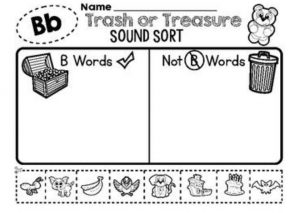 Number order activity will facilitate learning numbers and number order. Materials needed include a long piece of rope or string, numbers 1-10 written on cardstock or paper, and clothespins. String the rope between two objects. Lay the number cards face down on the floor. Have preschoolers flip them over and sort them into number order (have a reference of the layout for students to use as a guide). Once they feel it is correct, have them attach the number cards to the string with the clothespins.
Number order activity will facilitate learning numbers and number order. Materials needed include a long piece of rope or string, numbers 1-10 written on cardstock or paper, and clothespins. String the rope between two objects. Lay the number cards face down on the floor. Have preschoolers flip them over and sort them into number order (have a reference of the layout for students to use as a guide). Once they feel it is correct, have them attach the number cards to the string with the clothespins.
Category Activities with Apps
- Categories From I Can Do apps – You can use this app to get baseline data for how students are currently doing with identifying what doesn’t belong and which items go together.
categorisation skills
Smarty Ears Go Together app – This app works on categorization through matching. You can also have them explain why the items go together after matching them up
- Smarty Ears Categories Learning Centre – This app is great to have because it has different levels to use, so you can differentiate for your child. As your child progress in the categorization levels, you can make things more difficult. It includes tasks such as sorting dissimilar and similar objects, where does it go, category naming, category selection and also provide opportunities for naming additional items within a category
Check out the examples of types of categories in developmental order
Preschool – animals, body parts, clothes, shoes, jewelry, colors, letters, shapes, numbers, family members, days of the week, desserts, food, names, rooms of the house, furniture, sounds, toys, categorisation skills
Early Elementary – snacks, drinks, dairy foods, vegetables, pets, book parts, buildings, characters, coins, condiments, containers, dinosaurs, directions, emotions, flowers, fruits, holidays, ingredients, instruments, jobs, jungle animals, liquids, months, movies, patterns, planets, punctuation, reptiles, insects, rhyming words, seasons, senses, kitchen utensils, sizes, solids, sounds, sports, transportation, tools, vowels, writing utensils, school supplies
Late Elementary – mythical creatures, adjectives, verbs, parts of speech, school subjects, businesses, cities, states, consonants, countries, continents, currency, exercises, habitats, mammals, measure units, metals, nouns, oceans, odd/even numbers, presidents, punctuation, seasonings, symbols, textures, trees, weather. categorisation skills
When beginning to work on categories, target more concrete concepts then work towards more abstract concepts. Also, keep in mind it’s easier to receptively identify a category compared to expressively naming items in a category.
Source:
https://allisonfors.com/categories-speech-therapy
http://www.speechtx.com/pdf/category.pdf
- Best Books for Children with Autism Spectrum Disorder - December 20, 2022
- Selective Mutism - November 13, 2021
- Everyday Items as Awesome Toys: Play Dough - July 27, 2021

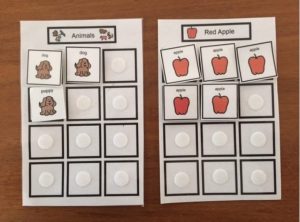
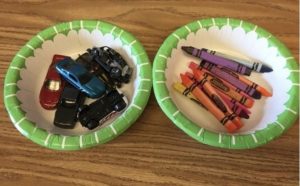
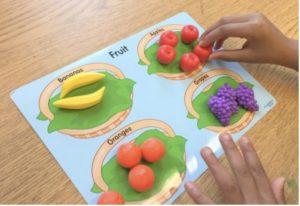
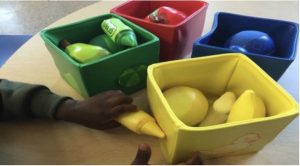
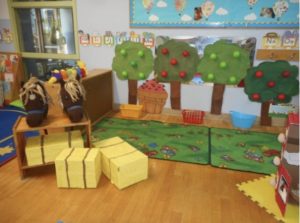
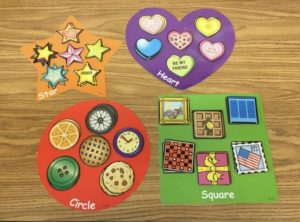
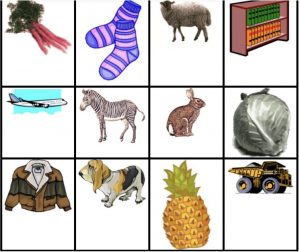
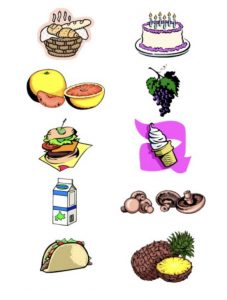
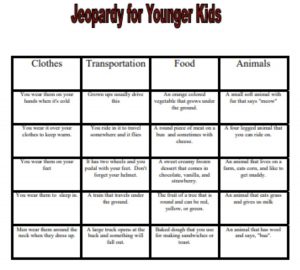
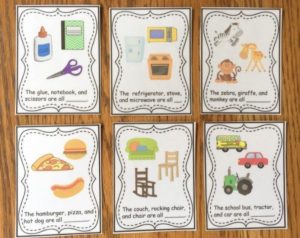
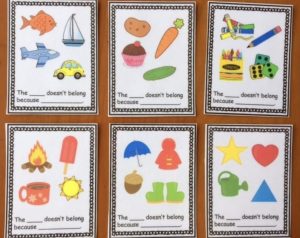
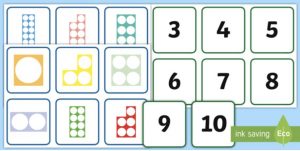
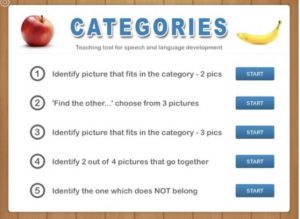
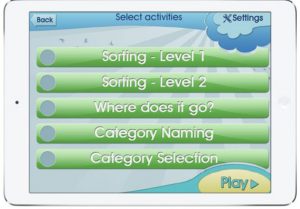
Leave a Comment
(0 Comments)